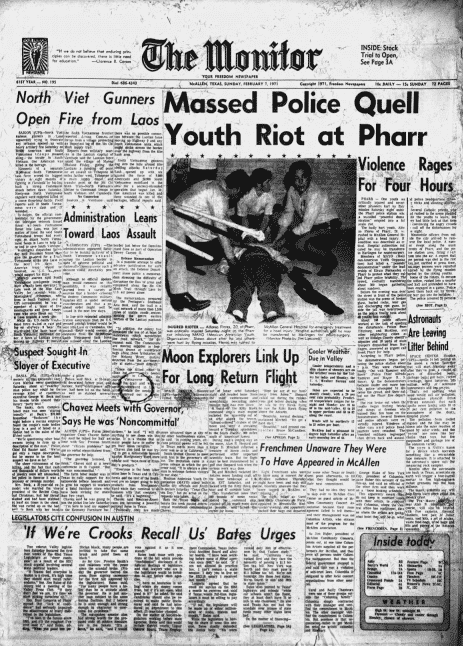A half century after it happened, the Pharr Riot was commemorated with an historical marker unveiled by the city and local organizers Saturday morning.
It’s planted in the concrete right by Ramos Hair Styling Center, where 50 years ago a couple dozen Mexican-Americans took to the streets to peacefully protest racism and discrimination that were starkly evident in the community.
By evening, there were hundreds in the street and the protest had turned into a violent riot that ended in clouds of tear gas, arrests and one death.
It also ended in genuine change. A year later residents elected A.C. “Beto” Jaime as the city’s first Hispanic mayor, a step that paved the way for other Mexican-Americans, current city Commissioner Daniel Chavez said Saturday.

“Fifty years ago, a Mexican-American like me would likely have had little chance of standing before you today as a leader and a commissioner in our community,” he said. “Fifty years ago, we were looked at differently, judged by the color of our skin, the language that we spoke and the lower socio-economic status that we were in.
“Fifty years ago may seem like a long time ago, but the reality is racial discrimination still exists.”
Thomas Ray Garcia, a Pharr resident who spent three years coordinating the marker effort, said he sees recognizing the past as a way to confront inequality.
“I hope that each of us in our own unique ways, starting today, can take awareness from here today and move forward in our own unique ways, knowing that the past informs the present, and together we can make a better and more equitable and more just future here in the Rio Grande Valley together,” he said.
Garcia began the project after noticing an ambiguous note on a bench outside Ramos Hair Styling Center five years ago that said “Rest in power A.F.”
Alfonso Loredo Flores was the man who died in the riot.
The note on the bench led Garcia down a rabbit hole of research on the riot and the social movements around it, research that came to a conclusion Saturday.
“My motivation behind applying to this historical marker project in 2017 was born out of that desire to have other people, especially young people, feel like their life in the present can be more informed and be more meaningful by that recognition that the past matters,” he said. “That the past, 50 years ago, informs so much of what we do today.”





